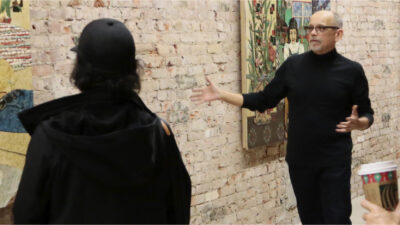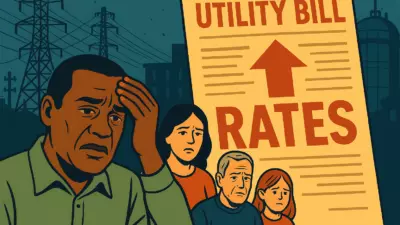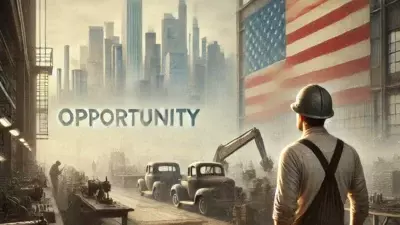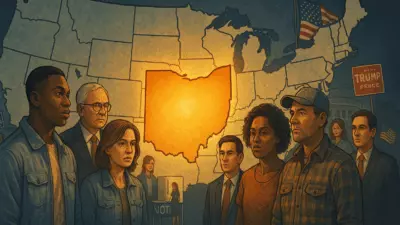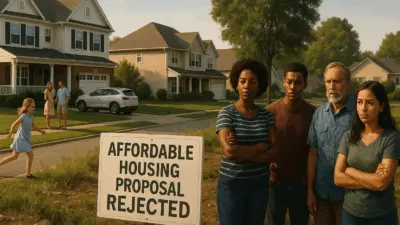Working with a group of other artists in the 1990s, Bill Miller scavenged inside forgotten places — steel mills and factories that seemed to have been abandoned overnight — looking for material to shape statement-making sculptures.

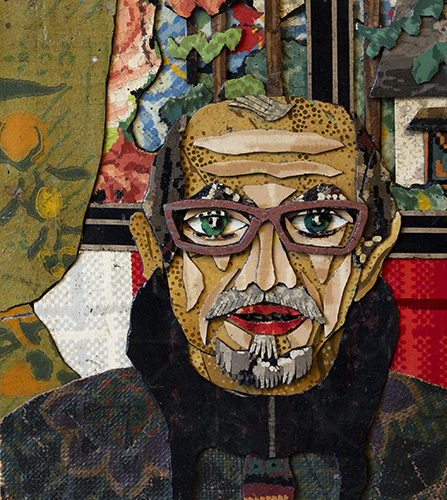
What he found in those hollowed-out industrial spaces, and in the row houses that had been left behind in the same swift economic blow, was the medium that came to define his work.
Linoleum, with its foothold in almost every American home for more than half a century, provided a backdrop for working-class families such as Miller’s and many others who toiled in mines and mills. Now, through intricate collages, it provides the pattern, texture, and palette for Miller’s expansive body of work: domestic tableaus, portraits, still-lifes, and landscapes that recall a haunting, collective memory of middle America.
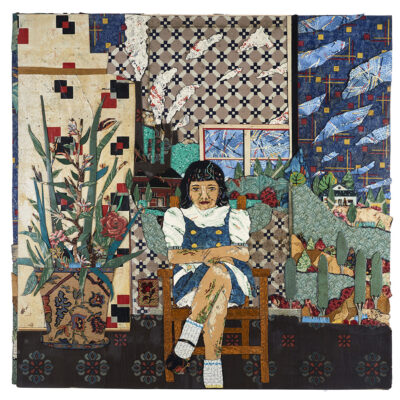
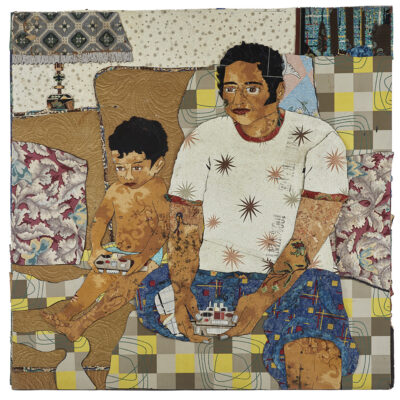
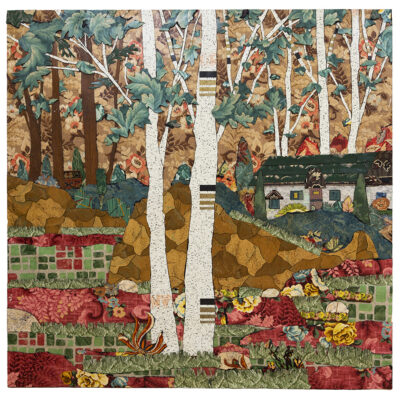
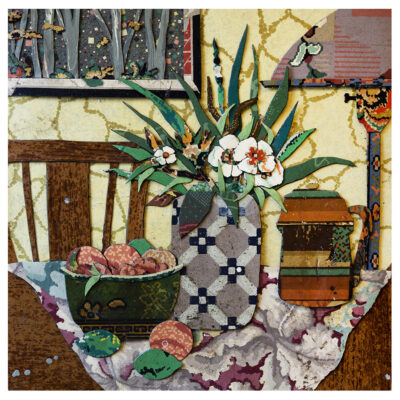
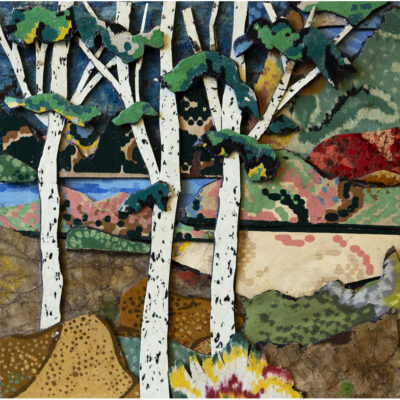
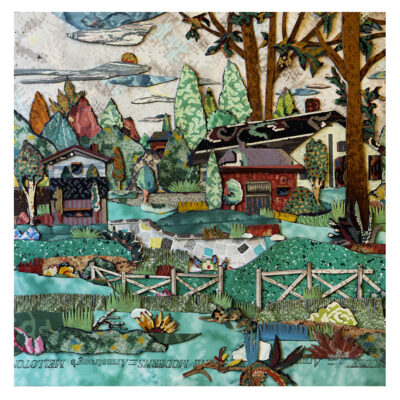
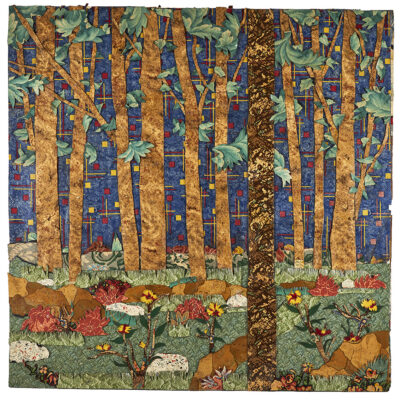
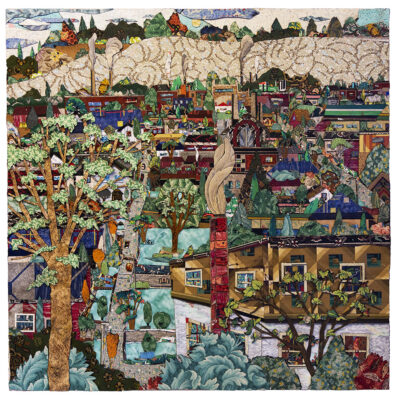
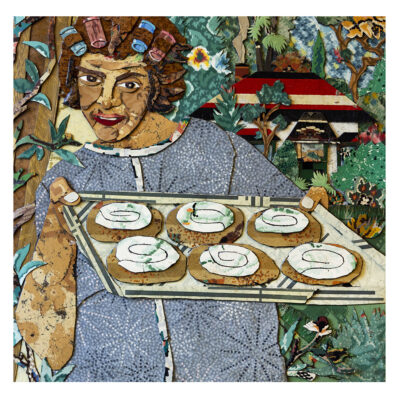
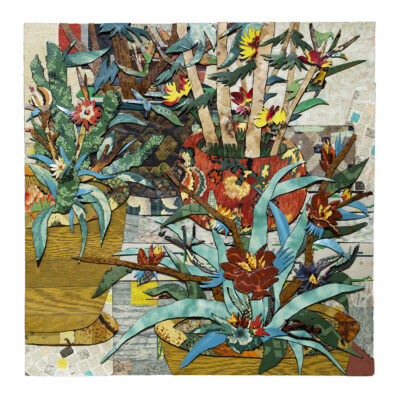
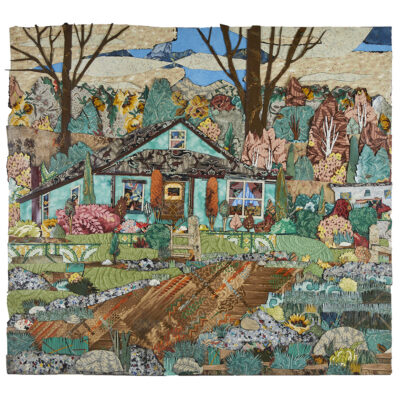
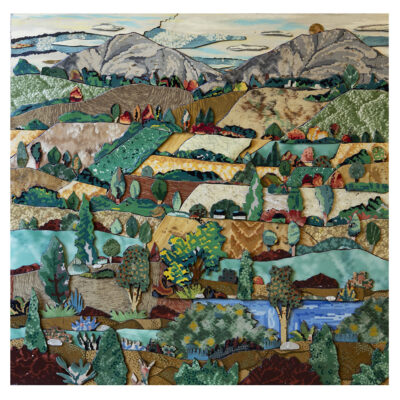
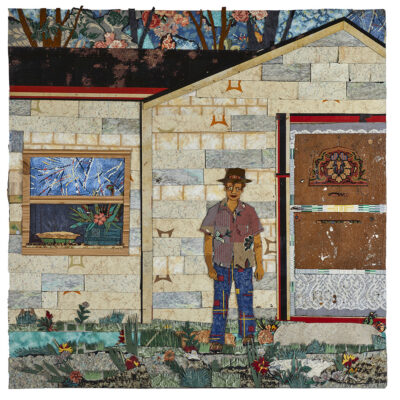
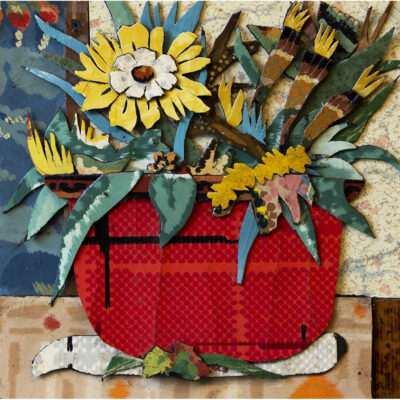
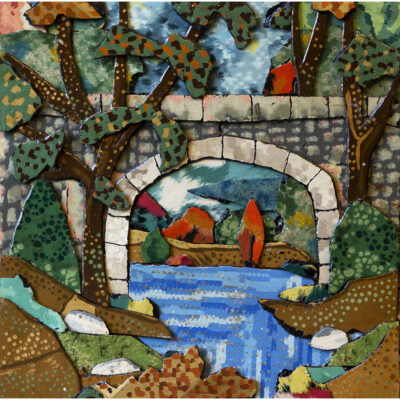
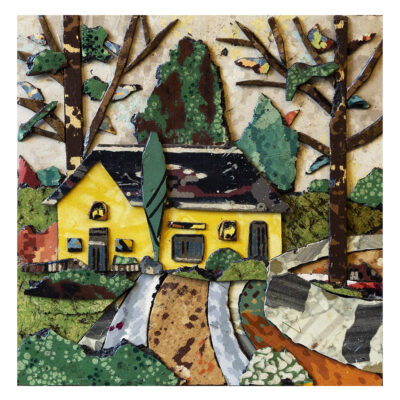
“I wanted to work with recycled material and I discovered that linoleum I was finding looked like pieces of a painting — a van Gogh or an impressionist painting,” he said. “I developed a desire to gather as much as I could. Along with being a collaborative artist, I was also a painter in acrylic and oil. I wanted to make those ideas out of flooring.”
Miller, born in Cleveland and now based in Pittsburgh, just completed his first solo exhibition at dieFirma in New York City, garnering celebratory reviews of his linoleum collages in The New York Times and The Brooklyn Rail. He’s the grandson of a coal miner and son of a factory worker, both of whom were killed in industrial accidents. His art, he said, provides an avenue to give voice to his own losses, and those of a generation, with imagery that brings shared stories back to the surface.
“There are a few things at play with using this material,” Miller said. “Most compelling is that it was lived on. Whether it was a bedroom, kitchen, or living room, the scuffs and indentations show it.
“Those histories, in a metaphysical or spiritual sense — combined with my discovery of the material, my past, and my hands — create images that give a greater impact. The material adds something I could never have invented myself.”

His New York City solo was his third collaboration with dieFirma, an artist-run platform and gallery anchored in New York’s Cooper Square. His work also has been exhibited internationally and in shows in New York, Los Angeles, Philadelphia, Seattle, and New Orleans. While the exhibition officially closed in January, the gallery will continue to show pieces from the installation over the coming months.
Adrea Stern, founder of dieFirma, said the collaboration with Miller, which included a series of interviews, was exactly the kind of generative process she had anticipated.
“We are interested in working with artists where it’s much more than just hanging the work in a physical space,” she said.
The reaction to his work also aligned with her understanding of the power of Miller’s process — and her view of his mastery of the medium.
“Everyone has seen linoleum in their home or a grandparent’s home and has memories of that material in its original use,” she said. “To see it transmuted into something completely different is exciting. It makes you wonder what’s possible, and that’s kind of what art is all about: taking what you think you know and transforming it into something else.”

